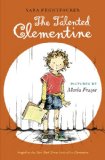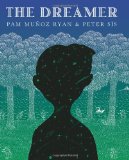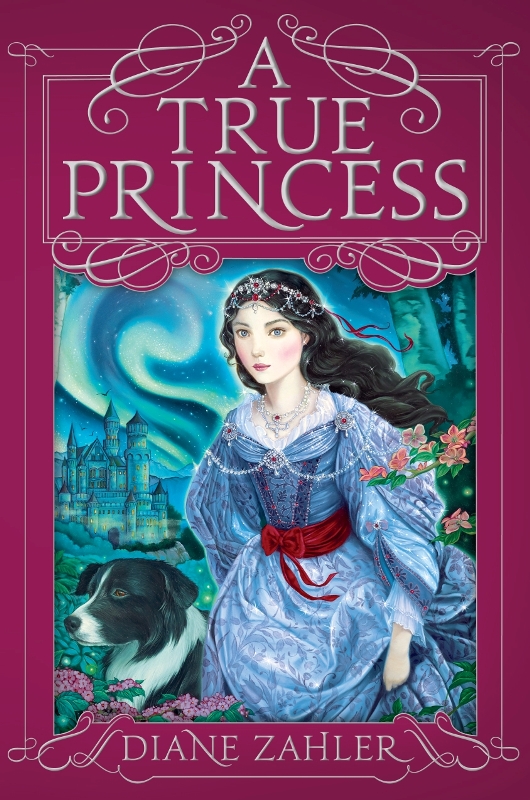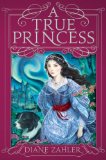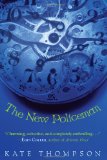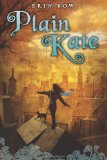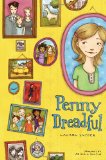 Penny Dreadful
Penny Dreadful
by Laurel Snyder
drawings by Abigail Halpin
Random House, New York, 2010. 304 pages.
Starred Review
2010 Sonderbooks Stand-out: #7 Children’s Fiction
I admit I was predisposed to like Penny Dreadful. I’d met the author at KidLitCon09, right after I’d already posted a review telling how much I enjoyed her earlier book, Any Which Wall. I found her a kindred spirit and was absolutely delighted when, after an exchange on Twitter, she offered to send me a copy of Penny Dreadful.
But predisposed or not, there’s no way I wouldn’t fall for a book where the main character mentions reading all the Anne of Green Gables books on the third page.
Penelope was bored, but she has an unusual perspective on her own boredom:
“This sorry state of affairs was only made more awful by the fact that Penelope had read enough books (they were just about the only thing that Penelope did not find boring) to know that bored little girls who live in mansions are usually spoiled. Penelope did not want to be spoiled. Spoiled girls in books were silly and selfish. Still, Penelope could not help it. Whatever she did, wherever she went, she was horribly, hungrily bored.
“Penelope thought that perhaps things might improve in a few years, if only she could go away to boarding school. In books, boarding school was always very exciting, full of deep secrets and midnight escapades, and sometimes magic. But even if her parents agreed, that was still far off in the future, and in the meantime she could think of no other real solution to her problem.”
I found Penelope’s solution to her boredom particularly delightful. After her father tells her that people who are bored have no Inner Resources, Penelope makes a resolution:
“From that day on, she tried to do things every single day. Since she had little experience with doing, and didn’t know where to begin, she turned to her books for help. Each morning she stood in front of her bookshelf with her eyes squeezed tightly shut and ran a finger down the spines of the bindings, stopping when the mood struck her. Then she’d pull out that particular book, flip to a random page, and do whatever the people in that book happened to be doing.”
The section that follows completely charmed this particular librarian, since it tells about Penelope’s actions inspired by several classic and much-beloved children’s books.
Especially beautiful is Penelope’s action inspired by one of my favorites, Edward Eager’s Magic Or Not? In that book, the children make wishes in a wishing well, and interesting things happen. Edward Eager leaves it up to the reader to decide if it’s magic or coincidence. As a child, I was sure it was magic. As an adult, reading it to my children, I realized that it probably wasn’t, but loved it all the more that it had convinced me as a child that it was.
“Penelope wandered out into the perfectly manicured lawn of her backyard, holding a folded scrap of paper. There was a decorative wishing well of sorts in the middle of the Greys’ lawn, beneath a little red maple tree. The well had been designed by a famous architect, and a picture of it was in a book her mother kept on the coffee table.”
Penelope makes a wish: “I wish something interesting would happen when I least expect it, just like in a book.”
About a week later, her father quits his job in the family firm in order to become a writer, and everything changes for their family. They run out of money. Her tutor and the housekeeper quit. Her parents aren’t used to keeping up with a mansion, and they are not happy to be broke.
“Then Penelope realized something. Wait! she thought. If the well is magic, and this is my fault, then I can fix it. And if I can’t fix it — it isn’t my fault at all!
“Straightaway she ran downstairs, grabbed a pencil and a sheet of paper from the kitchen table, and dashed out into the garden, where she stood by the well. This might not work, she told herself, but it can’t make things any worse. With a brief thought for how best to word her wish, Penelope bent over and scribbled a note.
“I just wish something would happen to make everything better right away!”
And, what do you know, shortly afterward, the doorbell rings. A telegram arrives. Penelope’s mother has inherited her great-great aunt Betty’s house.
The majority of the book happens after the family moves to the house, called the Whippoorwills. It is not at all what they expect. It turns out that Aunt Betty had let several other people add on to the house and live there, rent-free. At first, they are startled and upset that people are living in “their” house. As the summer goes on, Penny gets to know her quirky and interesting neighbors. She finds a friend not where she expects, and then learns how to be a friend.
Of course there are further problems. The back taxes on the property need to be paid, and if not, it will revert to the bank. They may not be able to stay at the Whippoorwills after all.
Of course Penelope, who now goes by Penny, tries to fix the situation, and I love the way things come together in a way that Penny, at least, doesn’t expect.
Altogether this is an absolutely delightful story. You’ve gt summer adventures with friends. You’ve got interesting characters who have conflict but are quite charming. You’ve got a revelation of Aunt Betty’s life story and how she came up with such interesting neighbors and possessions. And you’ve got a main character who reads great books!
This book would be a wonderful choice for a mother-daughter book club. Or a class read-aloud. In fact, on her website, Laurel Snyder has a fabulous offer:
***BRAND NEW PROGRAM! Join the PENNY DREADFUL BOOK CLUB! For 2010, I’m trying out a crazy new idea, a book club. Essentially, it works like this– you and your group of kids (class, library book club, bookstore regulars, homeschool co-op, etc) pick any five of Penny Dreadful’s 20 favorite books to read (Penny is a BIG reader). Contact me and tell me which books you’ve chosen, and I’ll supply my own special study guides for each of them (along with bookmarks and a poster for your library/store/classroom). You simply read and discuss the books you’ve chosen, and then I’ll come and join you for your discussion of the sixth book– Penny Dreadful! I will do this FREE OF CHARGE for groups of ten or more kids within driving distance, or for the cost of transportation/hotel if I must travel. I’m doing this–waiving my fee–because the books on the list are books I love personally, and the idea of kids reading them makes me so happy!
Isn’t that just wonderful? And the books are like the ones I mentioned, great classic children’s books.
Buy from Amazon.com
Find this review on Sonderbooks at: www.sonderbooks.com/Childrens_Fiction/penny_dreadful.html
Disclosure: I am an Amazon Affiliate, and will earn a small percentage if you order a book on Amazon after clicking through from my site.
Source: This review is based on a book sent to me by the author.
